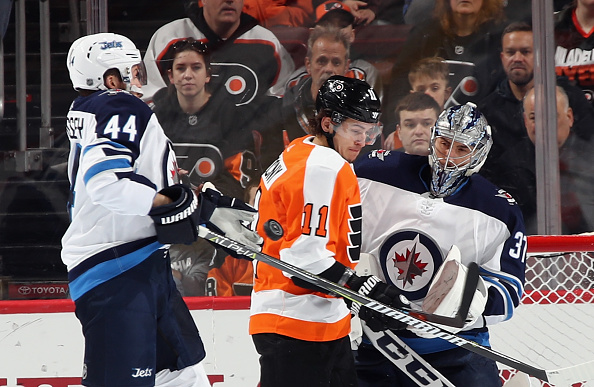NHL player development seems to always result in more questions than answers. How likely is it for a top pick to pan out? What makes a player a “steal”? Last Word On Hockey will be starting a new series on how to properly develop prospects from all different spots throughout the draft. This week’s piece involves draft picks in the back half of the first round and how they were used early in their careers.
Player Development Of First-Round Picks
In the span of 2005 through 2015, there were 84 total selections made between 16th overall and 30th overall on forwards playing in North America. Looking at all 84 forwards, they were split into different categories. Those categories were “Forwards Deemed NHL-Ready and Brought In Immediately When Ready,” “Forwards Near NHL-Ready and Brought In Immediately When Near-Ready,” “Forwards Rushed Slightly,” “Forwards Rushed,” “Forwards Forced,” “A Little Patience,” “Patience,” and “Too Much Patience.”
There were six forwards who fell into the sixth category, “patience,” on the list. Of those six players, two made their NHL impacts in their DY+2 seasons. Those players were Kyle Connor and Travis Konecny.
In this piece, we will be using stats from eliteprospects (raw stats) and hockey-reference (ice time). Additionally, the analytics we are using are as follows: even-strength offence goals above replacement (EVO), even-strength defence goals above replacement (EVD), wins above replacement (WAR) and goals above replacement (GAR). Those analytics are from evolving-hockey (subscription required).
NHL Player Development Of Kyle Connor
Connor drafted 17th overall by the Winnipeg Jets in the 2015 NHL draft, came out of the USHL’s Youngstown Phantoms organization. In his DY-1 season, Connor scored 31 goals and 43 assists for 74 points in 56 games, for 1.321 points per game. That ranked 16th out of the aforementioned 84 forwards in DY-1 production. The next season, he scored 34 goals and 46 assists for 80 points in 56 games, for 1.429 points per game. That ranked 16th out of those same 84 forwards in DY production.
After being drafted, Connor would play one season in the NCAA. In the NCAA, Connor would join the University of Michigan. There, he scored 35 goals and 36 assists for 71 points in just 38 games as a freshman, for 1.868 points per game. That ranked second out of the 82 forwards still outside the NHL in DY+1 production. He was first amongst players playing in the NCAA for their DY+1 seasons. Following that season, he would make the jump to the NHL.
How Connor Was Used
Connor, in his rookie season, would play only a handful of games with the Jets. Getting into 52 games with the Manitoba Moose, the Jets AHL affiliates, he scored 25 goals and 19 assists for 44 points. With the strong AHL production, he would see an additional 20 NHL games, where he averaged 12:13 time on ice per game. With that decent role, Connor scored just two goals and three assists for five points. His analytics left, even more, to be desired. His EVO (-0.5) was poor, and his EVD (-1.8) was even worse. With the poor even-strength impacts, Connor recorded a WAR (-0.5) and GAR (-2.8) that landed below replacement level.
After a disappointing NHL stint, Connor would be tasked with redeeming himself. Playing four AHL games, he did just that, scoring three goals and two assists, for five points. That earned him another NHL shot, and he did not look back. He played 76 games and averaged 16:54 per game. With a much larger role, which he earned, he scored 31 goals and 26 assists for 57 points, making a name for himself. He improved tenfold analytically, with an EVO (6.4) that was miles better than his rookie year, and an EVD (-0.8) that took a step forward. With the improved even-strength impacts, his WAR (1.0) and GAR (5.4) were much better.
Connor Scores Over 30 Goals, Again, In Year Three
In his third season, Connor would play explicitly in the NHL. Playing all 82 games, he averaged 19:15 per game, top-line minutes. With the massive role, he would not disappoint. Connor scored 34 goals and 32 assists for 66 points, a new career-high to that point. His analytics continued its massive climb, nearing elite territory. With an excellent EVO (11.0), however, he would take his foot off the gas defensively, with his worst EVD yet (-4.0). Despite the step backwards defensively, his offensive game carried his WAR (2.0) and GAR (10.6) to essentially double in score from the year prior.
Since that third season, in 2018-19, Connor has played three full seasons, all with the Jets. He is in the midst of another season with Winnipeg this year. Overall, since that third year, Connor has scored 121 goals and assists for 242 points in 230 games. He nearly reached the 50-goal mark in 2021-22, playing 79 games. Connor’s NHL player development went as smoothly as anyone could have asked. He dominated everywhere he went, outside of his first 20 NHL games. Now, he is an elite goal-scorer who can challenge for the Rocket Richard trophy for top goal scorer every year. He is up there with the Toronto Maple Leafs Auston Matthews and the Washington Capitals Alex Ovechkin year-to-year, making it difficult for him to get that coveted trophy.
NHL Player Development Of Travis Konecny
Konecny, drafted 24th overall by the Philadelphia Flyers in the 2015 NHL draft, came out of the Ottawa 67’s organization of the OHL. In his DY-1 season with the 67’s, he scored 26 goals and 44 assists for 70 points in 63 games, for 1.111 points per game. That ranked 22nd out of the 84 forwards in DY-1 production. The following season, Konecny was named captain and scored 29 goals and 39 assists for 68 points in 60 games for 1.133 points per game. That ranked 43rd among those same 84 forwards in DY production.
After being drafted, Konecny would play just one more OHL season before making an impact at the NHL level. In that final OHL season, he would see himself get dealt by Ottawa to the Sarnia Sting after playing 29 games with the 67’s. Overall, he scored 30 goals and 71 assists for 101 points in 60 combined games, for 1.683 points per game. That ranked seventh out of the 82 forwards still outside the NHL in DY+1 production. He would make his NHL debut the following season.
How Konecny Was Used
As a rookie in the NHL, Konecny suited up in 70 games and averaged 14:05 per game. With a solid role, he scored 11 goals and 17 assists for a modest 28 points. While that stat line doesn’t catch anyone’s eye, his underlying stats painted a brighter future for his offensive output. He finished the season with a strong EVO (6.7). With the strong offensive impacts, it also became clear he produced that at the expense of his defence, evidenced by his EVD (-3.4) being poor. His overall game, however, was strong, with good WAR (1.0) and GAR (5.4) numbers.
With a strong underlying game showing a higher ceiling of production, Konecny’s second season would prove important. He delivered. Playing 81 games, he averaged 14:54 per game, nearly a minute more per game than the year prior. With that, he scored 24 goals and 23 assists for 47 points, nearly doubling his output as a rookie. His underlying stats were phenomenal as well. His EVO (10.9) was near-elite, and his EVD (-0.2) was much improved. With the far better even-strength impact at both ends of the ice, his WAR (2.1) and GAR (10.9) also reached the near-elite levels that his EVO did. An outstanding sophomore campaign for the young Flyer.
Konecny Maintains Production, Takes Step Back Analytically In Year Three
After a fantastic second year, there was more hype than ever for Konecny. Stepping into all 82 games, he averaged a new career-high of 15:16 per game. With a slightly bigger role, he scored 24 goals and 25 assists for 49 points, maintaining his solid production line from the year prior. However, his analytics took a step back to about where they were in his rookie season. His EVO (6.5) was still strong but hit a new low. Meanwhile, his EVD (-5.0) also hit a new low. With the pretty large step back analytically, it’s no surprise his WAR (1.0) and GAR (5.4) dropped back to the exact same scores from his rookie years.
Following that third season, Konecny has played three full seasons and is in the midst of a fourth, all with the Flyers. In that span, he has scored 62 goals and 109 assists for 171 points in 218 games. So far this season, he has played 23 games and has scored 11 goals and 13 assists for 24 points. He is projected to finish with 36 goals and 43 assists for 79 points in 76 games, which would shatter his previous career-highs of 24 goals, 37 assists and 61 points, all set in 2019-20. Safe to say the Flyers are perfectly satisfied with how Konecny’s NHL player development went. He was certainly the right choice both then and now.
Junior league stats via Elite Prospects, NHL stats via Hockey Reference, NHL analytics via Evolving Hockey
Main photo:
Embed from Getty Images






